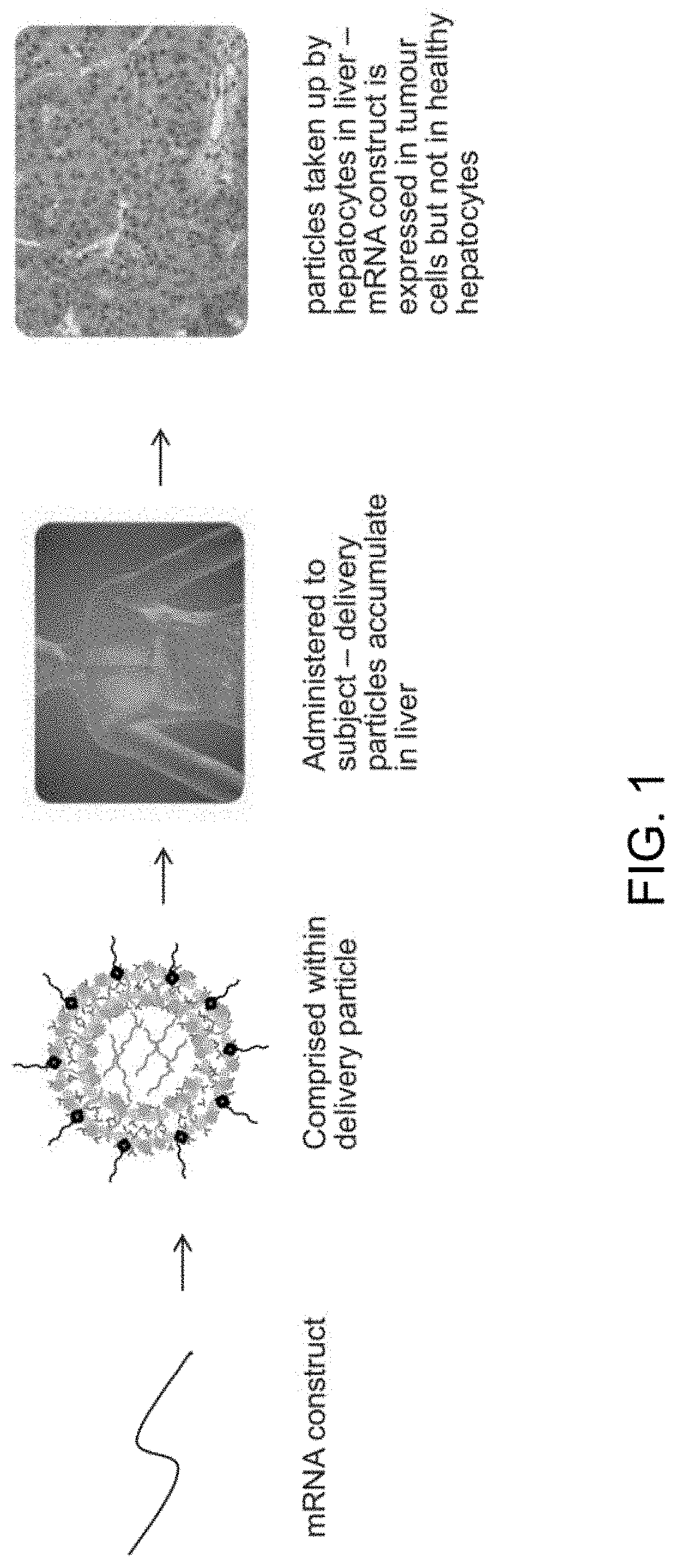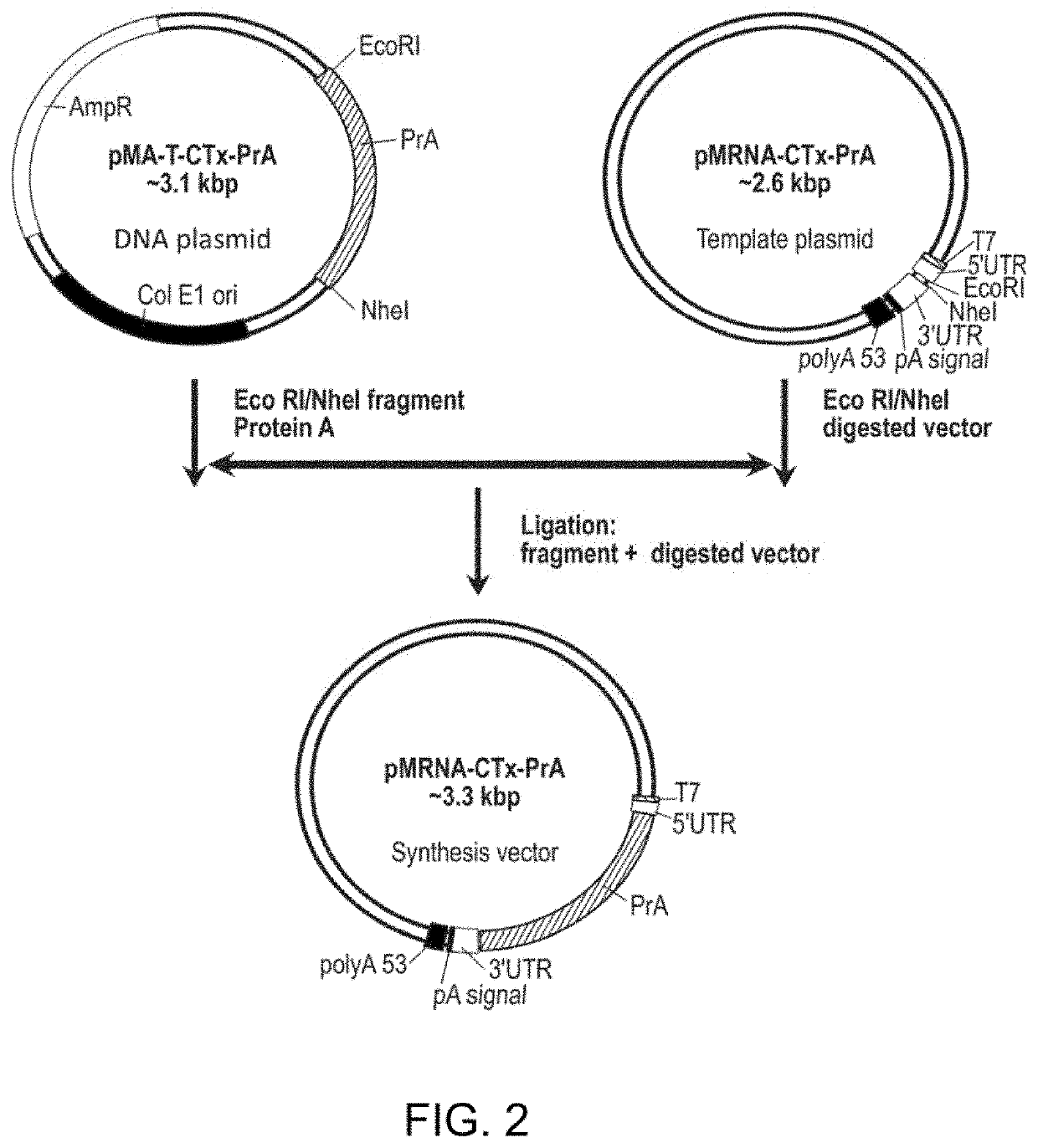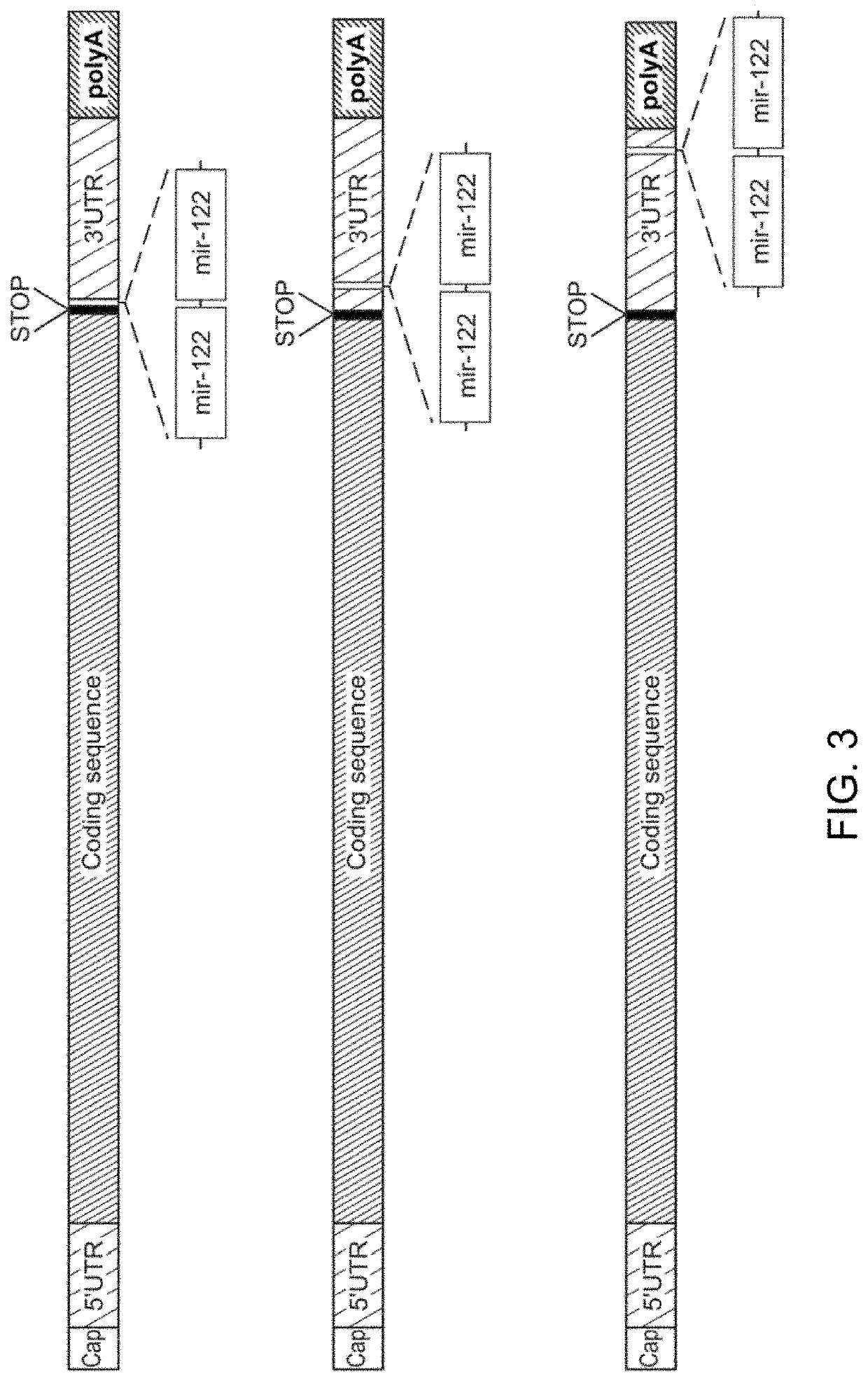Compositions and processes for targeted delivery, expression and modulation of coding ribonucleic acids in tissue
a coding ribonucleic acid and tissue technology, applied in the direction of dsdna viruses, drug compositions, genetic material ingredients, etc., can solve the problems of low transfection rate, toxicity and inflammation, viral intervention carries risks, etc., and achieves limited control over the duration and degree of expression of the introduced factor
- Summary
- Abstract
- Description
- Claims
- Application Information
AI Technical Summary
Benefits of technology
Problems solved by technology
Method used
Image
Examples
example 1
Tumor-Specific Gene Expression by miRNA-122 Regulation
[0193]miRNA-122 is an abundant, liver-specific miRNA, the expression of which is significantly decreased in human primary hepatocarcinoma (HCC) and HCC derived cell lines such as Hep3B and HepG2. The objective of this study was to demonstrate that modification of the 3′-untranslated region (UTR) of an mRNA sequence by the insertion of miRNA-122 targeted sequences (for example, SEQ ID NO: 2, as illustrated in variant 1, top of FIG. 3) may result in translational repression and / or deadenylation followed by decapping of exogenous mRNA in normal hepatocytes, but not in tested HCC cell lines.
[0194]To examine endogenous miRNA-122 activity in healthy hepatocytes, HMCPP5 cells (pooled plateable human hepatocytes, which are a mixture of plateable primary hepatocytes produced by combining cells from 5 individual donors) were transfected with mRNA-mCherry or mRNA-mCherry-122 prepared according to the above general protocols, using mCherry (...
example 2
Protein Expression Level After Tumor-Specific Gene Expression
[0204]In another experiment, Western blotting was employed to determine protein expression level ultimately exhibited after transfection as follows.
Transfection of Cell Lines and Immunoblot—Protein A
[0205]To evaluate tumor specific expression level of an exemplary 25 kDa human protein (denoted ‘protein A’) both liver cancer cells (HepG2 and Hep3B) and healthy hepatocytes (HMCPP5) were seeded into 12-well plates and transfected with 0.5 μg / well of nanoformulated mRNA expressing human protein A, 25 kDa (mRNA-A-DMPCTx) or mRNA expressing human protein A (a human protein of approximately 25 kDa) comprising two miRNA122 binding sequences in the 3′ UTR (SEQ ID NO: 2), Variant 1 (mRNA-A-miRNA122-DMPCTx), as described above in Example 1 for mCherry transfection. 24 hours after transfection, immunoblot was performed following total protein extraction.
[0206]For the immunoblot, culture media was removed, cells were washed with cold P...
example 3
Oncolytic Viral Combination Therapy In Vitro
[0213]It is described herein that the differential expression of provided mRNA constructs allowed by the method of the invention, and shown in the above Examples, can be used in combination with oncolytic viral therapy. In particular, where oncolytic viruses have been modified to remove virulence genes, attenuating their replicative ability in healthy cells, the invention can be used to restore the function of those genes, or equivalents thereof, in diseased cells such as cancer cells. To investigate this possibility, the combination of the oncolytic virus HSV-1 (R7041), deficient in US3 (see Leopardi et al, 1997, PNAS 94; 7891-7896), and the DMPCTx platform, providing an mRNA construct coding for US3, and modified with miRNA-122 binding sites, was used in a model of liver hepatocarcinoma (SEQ ID NO: 4).
General Protocols
Cell Culture
[0214]Human liver hepatocarcinoma (HCC) HepG2 and Hep3B cells were cultured in Eagle's Minimum Essential Medi...
PUM
| Property | Measurement | Unit |
|---|---|---|
| average diameter | aaaaa | aaaaa |
| average diameter | aaaaa | aaaaa |
| average diameter | aaaaa | aaaaa |
Abstract
Description
Claims
Application Information
 Login to View More
Login to View More - R&D Engineer
- R&D Manager
- IP Professional
- Industry Leading Data Capabilities
- Powerful AI technology
- Patent DNA Extraction
Browse by: Latest US Patents, China's latest patents, Technical Efficacy Thesaurus, Application Domain, Technology Topic, Popular Technical Reports.
© 2024 PatSnap. All rights reserved.Legal|Privacy policy|Modern Slavery Act Transparency Statement|Sitemap|About US| Contact US: help@patsnap.com










